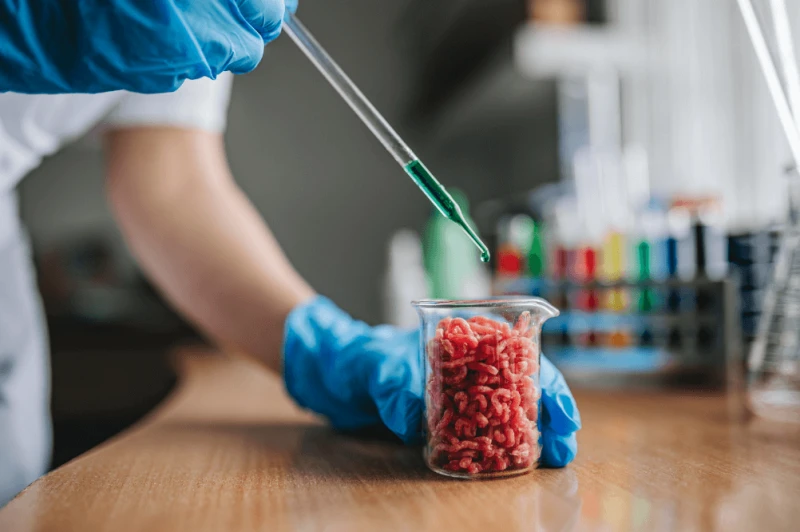‘Gastronomic dreams of astronomical proportions’: Collaboration between government and companies key to producing cell-based meat at scale
‘Gastronomic dreams of astronomical proportions’: Collaboration between government and companies key to producing cell-based meat at scale


Creating a technological (and delicious) wonder is one thing; scaling it to feed billions of people is another. Right now, governments globally have invested $1 billion into developing cellular and plant-based meats, according to the Good Food Institute. It’s a start, but it’s not enough. To get cellular agriculture over the finish line and onto people’s plates, governments and corporations need to innovate and approach cultivated meat as the essential technology it is, rather than just a new food trend. Cellular technology must be accelerated with the same urgency with which we treat renewable energy in order for it to scale and make a dent in carbon emissions.
To do that, collaboration will be key. Working together, stakeholders in the cell-cultivated meat space can make the best use of public funding for emerging technologies. Consortiums — collaborative associations of private companies, governments, and institutions like universities and NGOs — have previously helped lead scientific breakthroughs in things like lifesaving vaccines and space exploration. They’ve also played no small part in getting computers to where they are today.
The US is in the mix to develop better cellular agriculture technologies, and the recent success of startups like Upside Foods and Good Meat is a promising sign. Relative to the consortium-based efforts in other countries, though, the US is lagging.
This is an excerpt. Read the original post here

 | Videos | More... |

Video: Nuclear energy will destroy us? Global warming is an existential threat? Chemicals are massacring bees? Donate to the Green Industrial Complex!
 | Bees & Pollinators | More... |

GLP podcast: Science journalism is a mess. Here’s how to fix it

Mosquito massacre: Can we safely tackle malaria with a CRISPR gene drive?

Are we facing an ‘Insect Apocalypse’ caused by ‘intensive, industrial’ farming and agricultural chemicals? The media say yes; Science says ‘no’
 | Infographics | More... |

Infographic: Global regulatory and health research agencies on whether glyphosate causes cancer
 | GMO FAQs | More... |

Why is there controversy over GMO foods but not GMO drugs?

How are GMOs labeled around the world?

How does genetic engineering differ from conventional breeding?
 | GLP Profiles | More... |

Alex Jones: Right-wing conspiracy theorist stokes fear of GMOs, pesticides to sell ‘health supplements’




 Viewpoint — Fact checking MAHA mythmakers: How wellness influencers and RFK, Jr. undermine American science and health
Viewpoint — Fact checking MAHA mythmakers: How wellness influencers and RFK, Jr. undermine American science and health Viewpoint: Video — Big Solar is gobbling up productive agricultural land and hurting farmers yet providing little energy or sustainabilty gains
Viewpoint: Video — Big Solar is gobbling up productive agricultural land and hurting farmers yet providing little energy or sustainabilty gains Fighting deforestation with CO2: Biotechnology breakthrough creates sustainable palm oil alternative for cosmetics
Fighting deforestation with CO2: Biotechnology breakthrough creates sustainable palm oil alternative for cosmetics Trust issues: What happens when therapists use ChatGPT?
Trust issues: What happens when therapists use ChatGPT? 30-year-old tomato line shows genetic resistance to devastating virus
30-year-old tomato line shows genetic resistance to devastating virus California, Washington, Oregon forge immunization alliance to safeguard vaccine access against federal undermining
California, Washington, Oregon forge immunization alliance to safeguard vaccine access against federal undermining The free-range chicken dilemma: Better for birds, but with substantial costs
The free-range chicken dilemma: Better for birds, but with substantial costs ‘You have to treat the brain first’: Rethinking chronic pain with Sanjay Gupta
‘You have to treat the brain first’: Rethinking chronic pain with Sanjay Gupta
